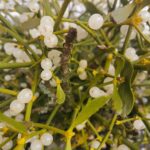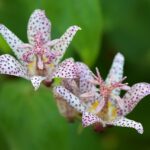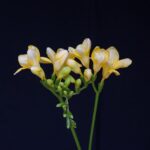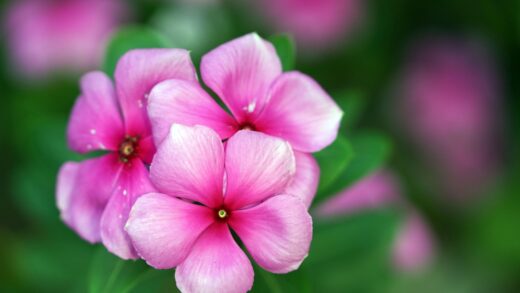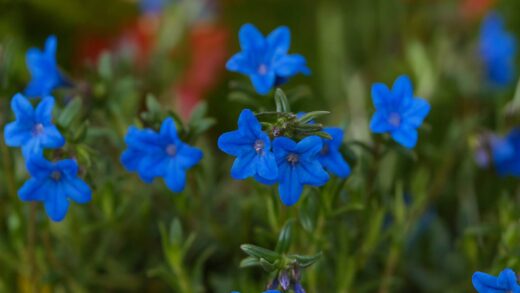The cornflower, known scientifically as Centaurea cyanus, is a long-known and beloved plant whose distinctive blue flowers are an indispensable ornament of summer fields and gardens. Although many regard it as an undemanding wildflower that can survive in almost any condition, the reality is that for abundant and prolonged flowering, as well as healthy, vigorous growth, it requires conscious nutrient replenishment. The plant’s nutrient demand is fundamentally moderate, a trait that can be traced back to its historical roots, as it originally developed on the edges of grain fields in relatively nutrient-poor soils. Therefore, in modern horticultural cultivation, the greatest challenge is not nutrient deficiency, but rather the danger of over-fertilization, which stimulates excessive growth of vegetative parts at the expense of flowering.
To understand the nutrient uptake of the cornflower, it is essential to know its soil requirements. The plant prefers well-drained, light to medium-textured soils with a neutral to slightly alkaline pH, ideally between 6.5 and 7.8. Excessively acidic or highly calcareous soils can inhibit the uptake of certain micronutrients, such as iron or manganese, leading to deficiency symptoms. It is important to emphasize that the cornflower tolerates waterlogged, airless soils very poorly, as such conditions lead to root suffocation and a drastic reduction in the ability to utilize nutrients. Ensuring proper soil structure is therefore a fundamental prerequisite for effective nutrient management.
Among the macronutrients, phosphorus (P) and potassium (K) are of the greatest importance for the cornflower, while nitrogen (N) must be used sparingly. Nitrogen is primarily responsible for the growth of green mass, i.e., leaves and stems, but an excessive amount results in weak, leggy shoots and a drastically reduced flower yield. In contrast, phosphorus is essential for root formation, bud development, and the intense color of the flowers. Potassium, in turn, promotes general plant resistance, stem strength, and the regulation of water balance, contributing to the improvement of the plant’s stress tolerance.
Micronutrients, such as boron (B), iron (Fe), manganese (Mn), and zinc (Zn), although required only in small quantities, can cause serious physiological disorders if deficient. Boron, for example, plays a key role in the development of flowers and seeds, and its deficiency can result in deformed flowers. Iron is essential for chlorophyll formation, and its deficiency manifests as interveinal chlorosis (yellowing) on young leaves, especially in calcareous soils. Most high-quality garden soils rich in organic matter usually contain sufficient micronutrients for the cornflower, so their targeted supplementation is only necessary in justified cases, based on soil analysis or clear deficiency symptoms.
Soil preparation and basal fertilization
The foundation of successful cornflower cultivation is professional soil preparation and pre-sowing basal fertilization, which can ensure a balanced nutrient supply for the plant’s entire vegetation period. The most professional approach is to conduct a laboratory soil analysis, which provides an accurate picture of the soil’s nutrient content, organic matter level, and pH. With this information, missing elements can be replenished in a targeted, efficient, and environmentally friendly manner. In the absence of such an analysis, one must rely on general practice and visual assessment of the soil, but this always involves some uncertainty.
More articles on this topic
The most important element of basal fertilization is the incorporation of organic matter into the soil, which functions not only as a nutrient source but also as a soil structure improver. The use of mature compost or high-quality, residue-free, well-rotted manure that is at least one or two years old is most recommended. These materials should be worked into the top 15-20 centimeters of the soil a few weeks before sowing or planting, at a rate of 2-4 kilograms per square meter. Organic materials break down slowly through microbial activity, providing a long-lasting, balanced nutrient supply without the risk of over-fertilization.
If you decide to use mineral fertilizers, choose a complex, preferably slow-release product with low nitrogen but higher phosphorus and potassium content. NPK ratios such as 5-10-10 or 8-24-24 can be ideal for cornflowers. When determining the application rate, always follow the instructions on the product packaging, but as a general rule, it is better to aim for the lower end of the recommended dosage for cornflowers. Excessive application of mineral fertilizers can be harmful not only to the plant but also to soil life and surrounding waters.
Adjusting the soil pH is also a crucial part of the preparation. If a soil test or a simple test strip indicates excessively acidic soil (below pH 6.0), the value can be corrected by applying lime (e.g., garden lime) in the autumn before fertilization. In the case of highly alkaline soils (above pH 8.0), the regular incorporation of organic matter, such as peat or acidic compost (e.g., pine or oak compost), can help lower the pH. The correct pH ensures that the applied and existing nutrients in the soil are present in a form that the plant can absorb.
Top-dressing and nutrient supplementation timing
Top-dressing, which is supplemental nutrient application during the growing season, is unnecessary and can even be harmful for cornflowers in most garden conditions. If the soil preparation and basal fertilization were done properly, the soil will provide enough nutrients for the entire season. Excessively applied fertilizer, especially those rich in nitrogen, can lead to a lack of flowering and the development of weak plant tissues that are more susceptible to diseases and pests. Therefore, top-dressing should only be used in justified and well-identified cases.
More articles on this topic
However, there are special situations where supplemental feeding may be warranted. This includes cultivation on sandy, loose-textured soils, where nutrients can quickly leach out of the root zone due to heavy watering. Top-dressing may also be justified for plants grown in containers or flower boxes, as the nutrient content of the limited growing medium is depleted more quickly. In cut flower production, where the goal is maximum flower yield and continuous production, a carefully scheduled liquid feeding program may also be necessary.
If you decide to top-dress, the timing and the type of fertilizer chosen are crucial. The most appropriate time for supplemental feeding is the initial stage of bud formation, when the plant’s energy demand increases for flower development. At this time, the application of a liquid fertilizer rich in phosphorus and potassium but low in nitrogen is recommended. Commercially available flowering or “bloom booster” liquid fertilizers, as well as products developed for tomatoes, are usually of a suitable composition. These should always be applied in a more diluted concentration than prescribed, for example, at half dose, once every 2-3 weeks.
As an alternative and gentle solution, organic-based liquid preparations such as diluted nettle tea or seaweed extract can be used. Nettle tea, with its moderate nitrogen and potassium content and micronutrients, stimulates growth, while seaweed extract is rich in potassium, trace elements, and growth-promoting hormones that enhance flowering and stress tolerance. It is important to stop top-dressing in the late summer and early autumn to allow the plant to prepare for the dormant period and to prevent new shoots from being damaged by frost.
Symptoms of nutrient deficiency and excess
The nutritional status of the cornflower can also be assessed by carefully observing its leaves and flowers, as the plant reacts to disturbances in nutrient supply with characteristic symptoms. The most obvious sign of nitrogen deficiency is weak, stunted growth and uniform yellowing or paling of the lower, older leaves. This is in sharp contrast to nitrogen excess, which results in lush, dark green foliage and elongated, weak stems, while flower formation is almost completely absent. This is the most common mistake in fertilizing cornflowers, so nitrogen-containing products should be used with particular caution.
Phosphorus deficiency is less spectacular but has more serious consequences for flowering. Symptoms include delayed or sparse flowering, smaller, paler flower heads, and occasionally a purplish discoloration of the leaves, especially in cold weather. Potassium deficiency manifests as general weakness of the plant; the stems are limp, and the plant becomes more susceptible to fungal diseases. Another characteristic symptom is the yellowing, then browning and drying of the edges of older leaves, while the center of the leaf remains green.
Micronutrient deficiencies are less common but can be expected in calcareous, alkaline soils. Iron deficiency causes the most characteristic symptom, so-called lime-induced chlorosis, which appears on the youngest shoots and leaves. In this case, the leaf veins remain green, but the tissue between the veins turns distinctly yellow, and in severe cases, almost white. Boron deficiency can lead to the death of the growing tip and the formation of distorted, underdeveloped flowers, which significantly reduces their ornamental value.
General symptoms of over-fertilization include scorching and browning of the leaf edges, which is a consequence of the water-withdrawing effect of salts accumulating in the soil. The plant’s growth may stop, the leaves may appear limp even in moist soil, and in severe cases, the entire plant may die. To avoid over-fertilization, always keep the principle of “less is more” in mind. A balanced nutrient management based primarily on organic matter and the preservation of soil health is the best strategy for growing a healthy, abundantly flowering stand of cornflowers.



